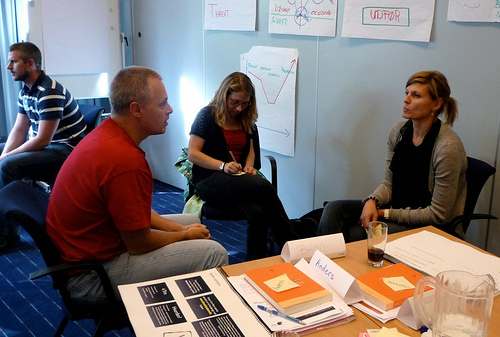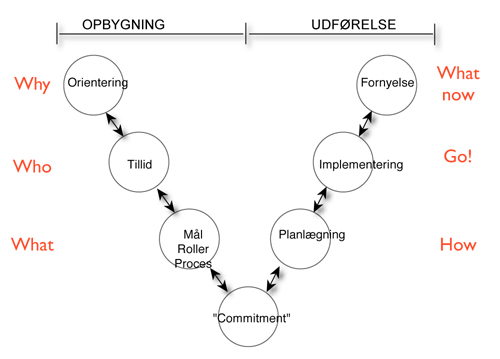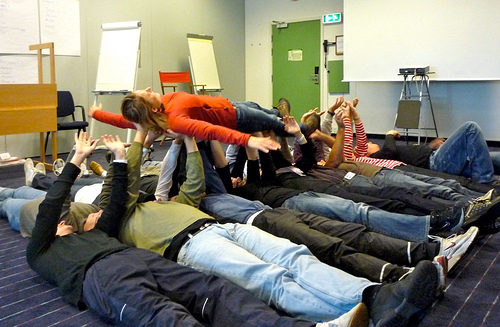[lang_da]Det første GROW Leadership forløb for mellemledere i Berendsen Textil er skudt i gang, og kick-off modulet fokuserede i høj grad på Service Profit Chain, og hvordan man skaber intern kvalitet i sin virksomhed.
Vi brugte en del kræfter på at arbejde med Team V-modellen og teamforståelse. Team V-modellen er kort beskrevet en model over den proces, der skal til for at skabe et stærkt team.
Først skal man bruge tid på at skabe tillid, en fælles forståelse og afklaring af forvententninger i gruppen – og definere gruppens mål og og indbyrdes roller (ved at arbejde sig ned gennem den ene side af v’et). Det kan man gøre ved at lave et ‘team manifest’ ud fra nogle centrale spørgsmål, der skal klarlægge gruppens potentiale:
Først da er man klar til at skabe et ‘commitment’ i gruppen og lægge en plan for udførelsen af et givent projekt (ved at arbejde opad gennem den anden side af v’et)
Vi arbejdede med forskellige øvelser, der havde det formål at øge forståelsen for Team V-modellens funktion og vigtighed i gruppeprocesser – så budskabet ikke kun blev forstået intellektuelt, men af hele kroppen.



